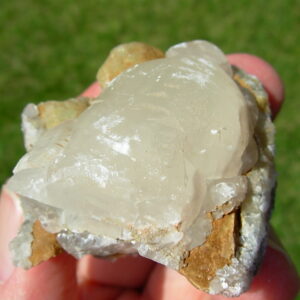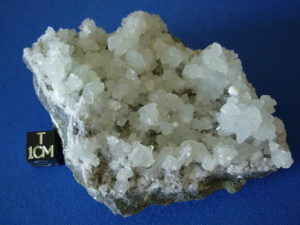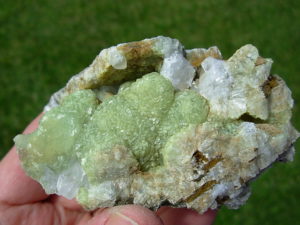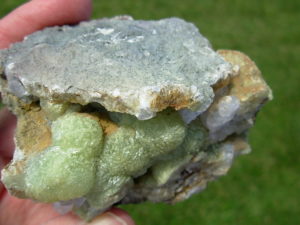Prehnite
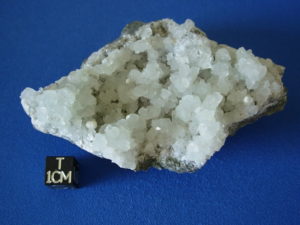 Prehnite is an orthorhombic mineral which is rarely found as distinct crystals. Found in association with volcanic rocks, it usually forms in aggregates with botryoidal habit. Prehnite is typically pale green to yellowish green with a white streak. It is named after a Dutchman, Colonel H. von Prehn, who discovered the mineral at the Cape of Good Hope, South Africa, and brought the first specimens to Europe. Prehnite occurs most commonly in veins and cavities in igneous rocks, often in association with zeolites. Prehnite is never clean enough to produce bright faceted gemstones but beautiful yellow to blue green cabochons can be cut from the right material.
Prehnite is an orthorhombic mineral which is rarely found as distinct crystals. Found in association with volcanic rocks, it usually forms in aggregates with botryoidal habit. Prehnite is typically pale green to yellowish green with a white streak. It is named after a Dutchman, Colonel H. von Prehn, who discovered the mineral at the Cape of Good Hope, South Africa, and brought the first specimens to Europe. Prehnite occurs most commonly in veins and cavities in igneous rocks, often in association with zeolites. Prehnite is never clean enough to produce bright faceted gemstones but beautiful yellow to blue green cabochons can be cut from the right material.
-
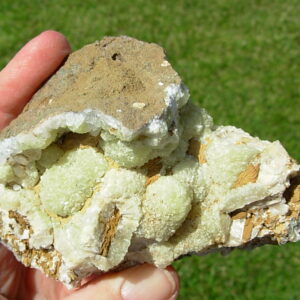
Green Prehnite and Calcite Crystals from New Jersey
$33.00 Add to cart -
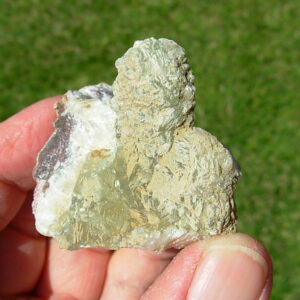
Green Prehnite Finger Crystals from New Jersey
$17.00 Add to cart -
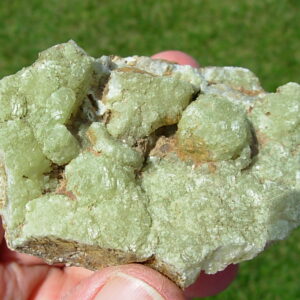
Mint Green Prehnite Crystals from New Jersey
$19.00 Read more -
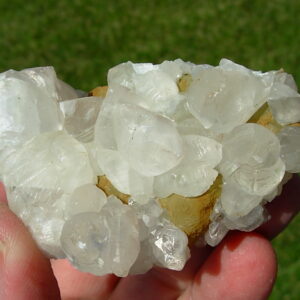
Prehnite with Calcite Crystals from New Jersey
$29.00 Add to cart -
Prehnite with Calcite Crystals from New Jersey
$19.00 Add to cart
Item # PH0409746S49
Rare Crystal Prehnite with Gyrolite nodules from Mumbai India

Rare Crystal Prehnite with Gyrolite nodules from Mumbai, India.
This is an old stock estate specimen from a Michigan estate. Excellent example of the rarest form of Prehnite in its crystal form instead of the usual botryoidal form. Gyrolite often forms nodular aggregates. These aggregates can appear glassy, dull or even fiberous. Unlike other similar looking minerals (such as prehnite or smithsonite), gyrolite usually forms individual nodules as opposed to botryoidal or crustal growths. The aggregate nodules can often accompany many fine and rare minerals such as apophyllite, okenite and many of the zeolites. Much gyrolite forms inside of volcanic bubbles called vesicles and can only add another element to the surreal mineral-scape inside.
This specimen weighs 0.35 lbs (157g) and measures 3.5 x 2.5 x 1.2 inches (91 x 63 x 30mm)
Item # PH09115S28P411
Green Prehnite and Calcite Crystals from New Jersey

Green Prehnite and Calcite Crystals
This is a very nice display of Calcite Crystals on Prehnite from the Prospect Park Quarry in North Haledon, New Jersey. This is very rich in color and crystal formations and there is are small calcite crystals around the prehnite. The site is an active quarry which cuts through several basalt flows. Formation- the quarry cuts into the Preakness Basalt. This is from the Alan Beres collection, He collected during the 1930's through the 1960's. There is a little damage as can be seen in the pictures.
This specimen measures 3.4 x 2.3 x 1.9" (8.6 x 5.8 x 4.8cm) and weighs 0.52lb ( 238g )

